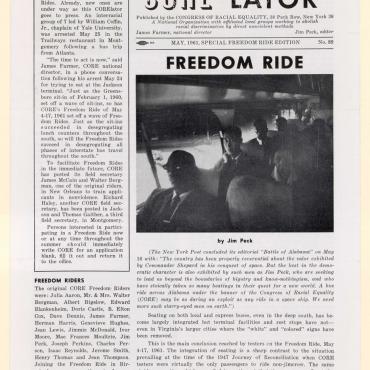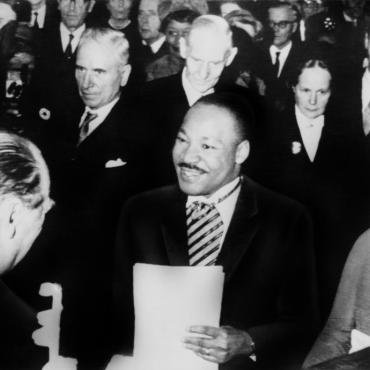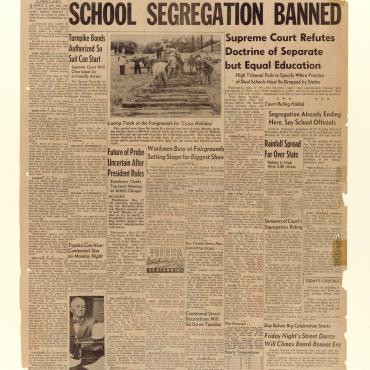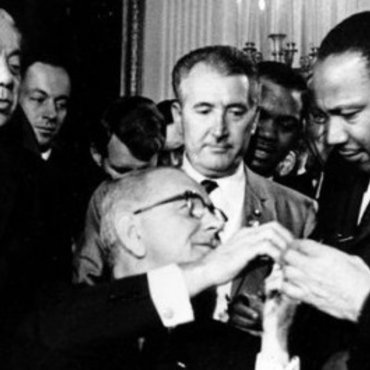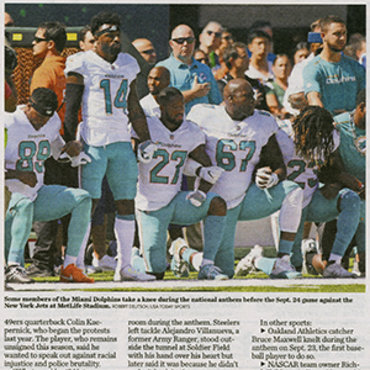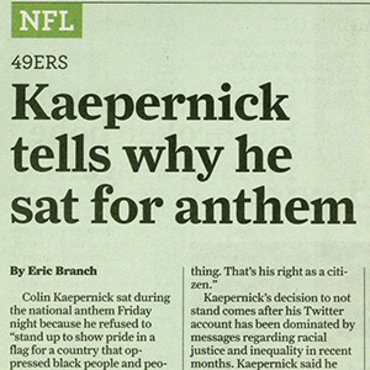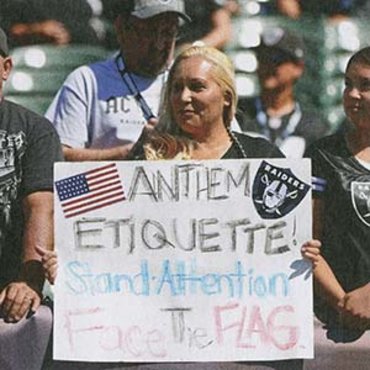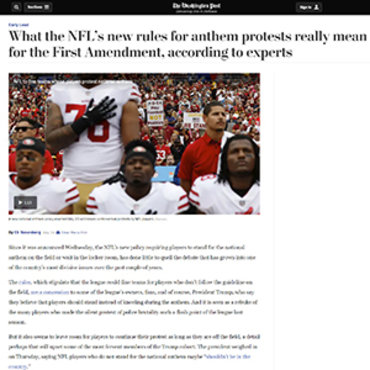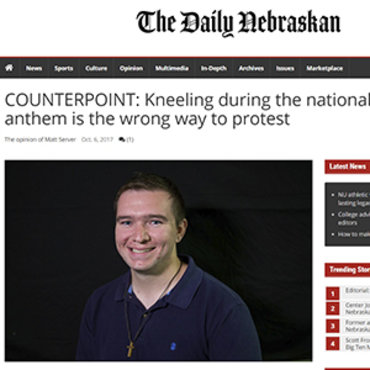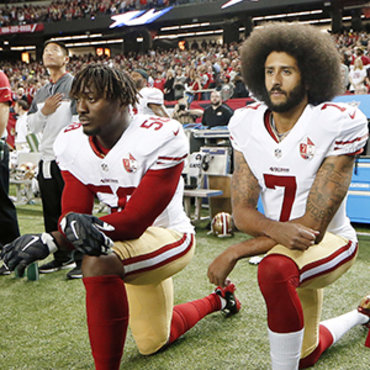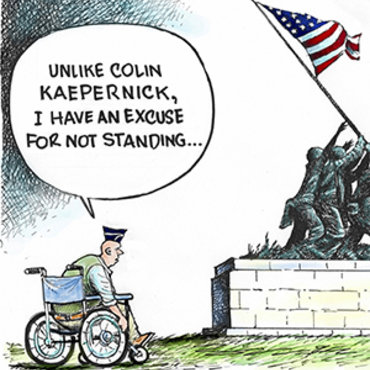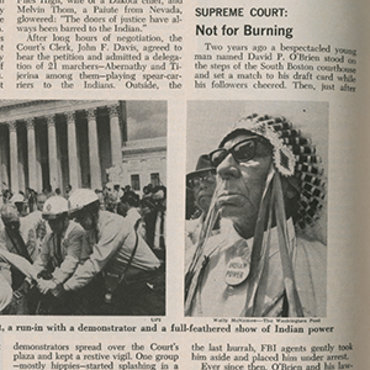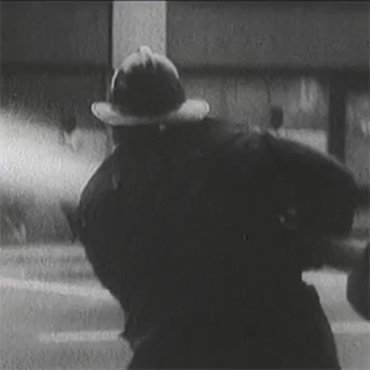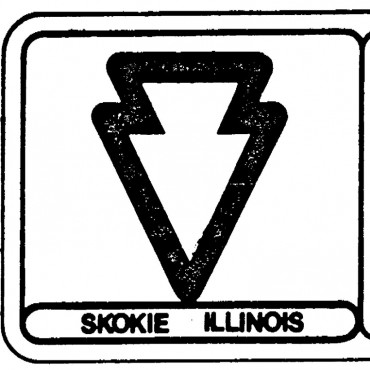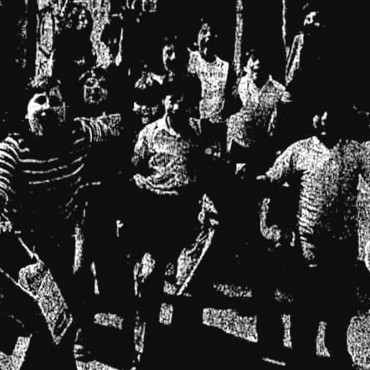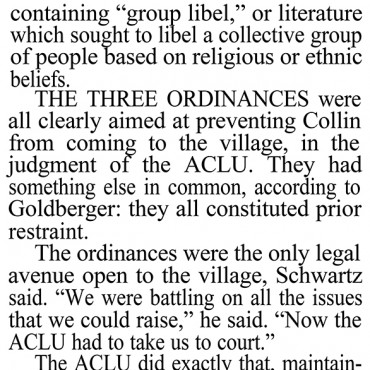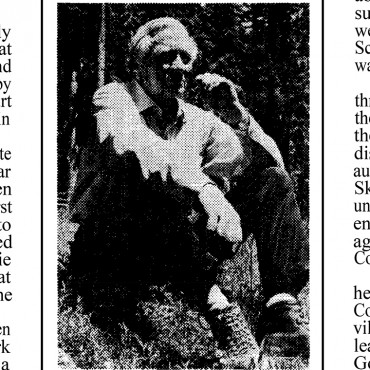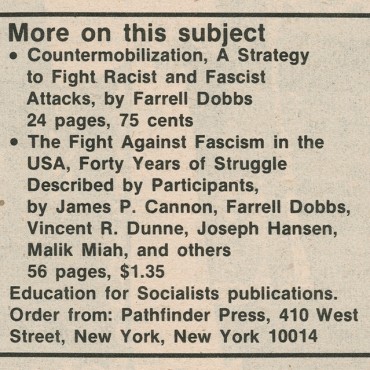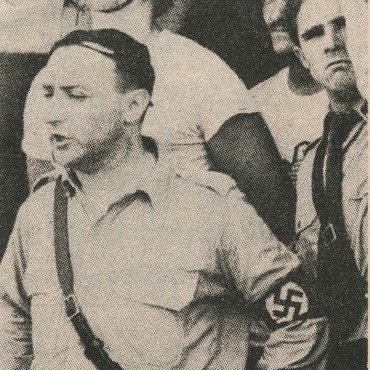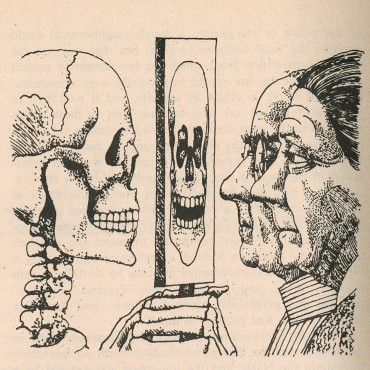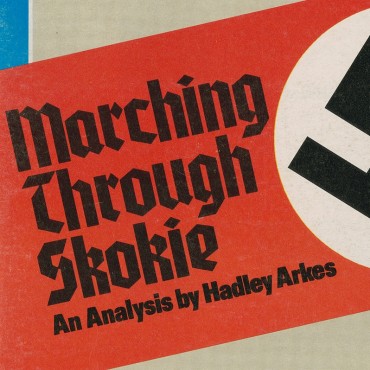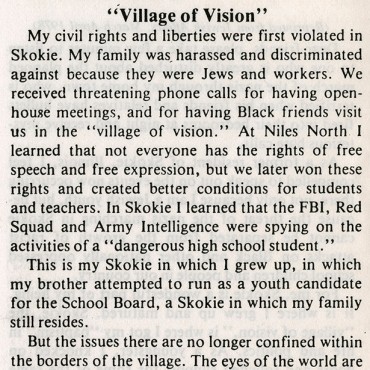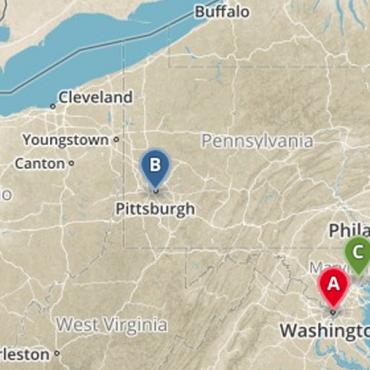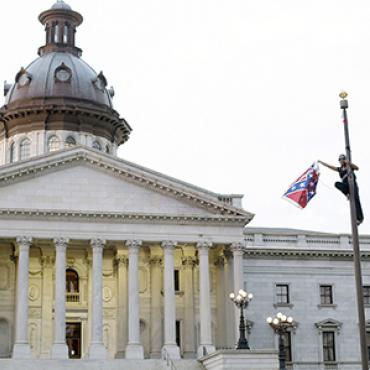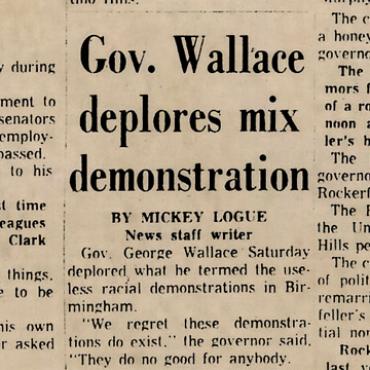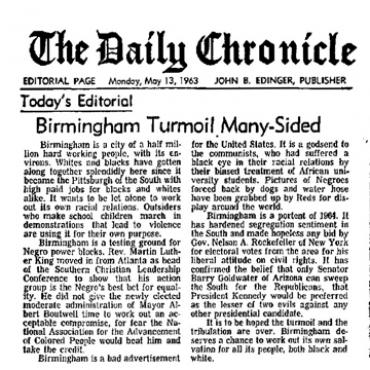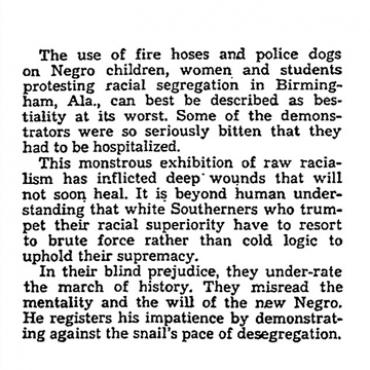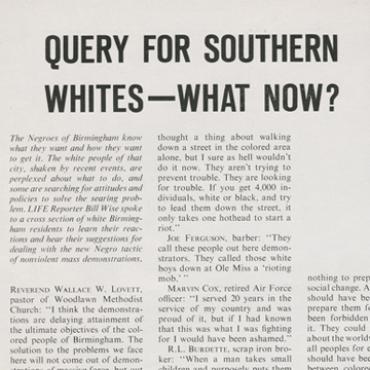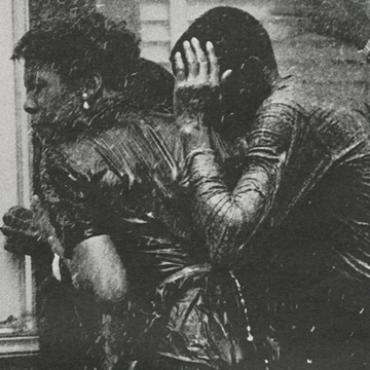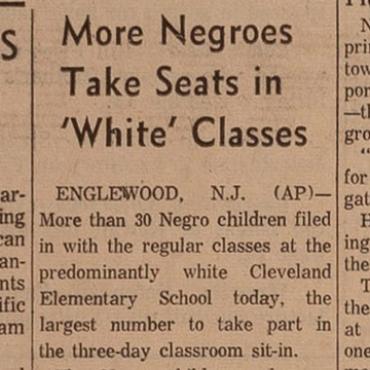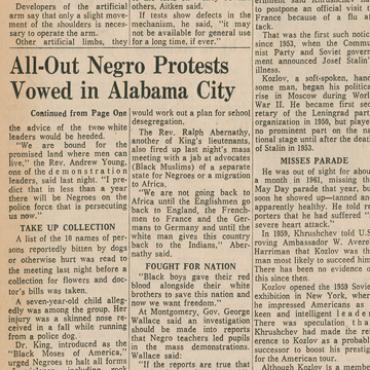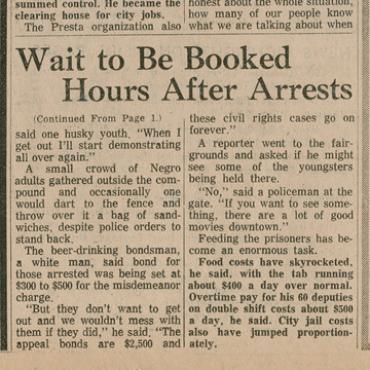50th Anniversary of MLK Assassination
Explore our collection of newspapers, photographs and lesson plans relating to the Rev. Martin Luther King Jr., the fight for social justice, and his death in 1968.

On April 4, 1968, the fatal shooting of Martin Luther King Jr. sent shock waves through the country. Famous for his nonviolent principles and rhetorical mastery, King understood the power of the First Amendment and used it to bring national attention to the ongoing battle for racial equality. His death on a motel balcony in Memphis, Tenn., silenced a major figure in the civil rights movement, but his message and words remain strong half a century later.
View archived front pages covering the assassination, funeral, ensuing riots and the impact of King’s death on civil rights legislation from The Atlanta Constitution, the North Carolina Courier-Tribune, The Michigan Daily and The Macon (Ga.) Telegraph, as well as a photograph of King’s family at his funeral.
You can bring King, the fight for racial equality and the First Amendment into your classroom through NewseumED resources. (To access some of these resources, you must be signed into NewseumED; registration is free.)
SIGN UP FOR NEWSEUMED.ORG
ON THE NEWSEUMED WEBSITE
- EDCollection: “Making a Change: The First Amendment and the Civil Rights Movement.”
- An interactive timeline with more than 200 historical front pages, videos and photographs. Many entries feature King and his role in the civil rights movement, including the Southern Christian Leadership Conference, the Letter From Birmingham Jail, the March on Washington and the Civil Rights Act of 1964, as well as coverage of his assassination in Memphis, where he went to support a sanitation workers’ strike.
- A media map comparing newspaper coverage of key civil rights events, such as the Supreme Court ruling in Brown v. Board of Education.
- Standards-aligned lesson plans that support historical connections, media literacy and civic engagement.
- Lesson Plan: Letter From Birmingham Jail. King was arrested on April 12, 1963, in Birmingham, Ala., by Bull Connor, the public safety commissioner, for parading without a permit and for defying a state order banning demonstrations. The same day that King was arrested, a letter, signed by eight white ministers from Birmingham and titled “A Call for Unity,” was printed in The Birmingham News. The lesson plan includes their letter and King’s response, which has come to be known as his “Letter from Birmingham Jail.” The lesson includes discussion questions.
- “The Press and the Civil Rights Movement” video, with accompanying lesson plan and viewing guide, explores the interplay between the free press in America and the fight for equality, showing how civil rights leaders like King used the media to achieve their goals.
AT THE NEWSEUM
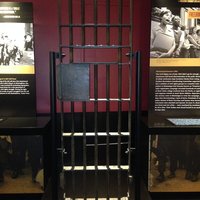
- “1968: Civil Rights at 50” is part of a changing exhibit exploring the tumultuous events that shaped the civil rights movement in 1968, when its leader, King, was assassinated, unleashing anger and anguish across the country. The exhibit runs to Jan. 2, 2019.
- “Make Some Noise: Students and the Civil Rights Movement” is a Newseum exhibit on young adults in the early 1960s who fought segregation by making their voices heard and exercising their First Amendment rights. Featured are a section of the original F.W. Woolworth lunch counter in Greensboro, N.C., where in 1960 four African-American college students launched the sit-in movement; and a bronze casting of the Birmingham, Ala., jail cell door (at right) behind which King penned his famous “Letter From Birmingham Jail” in 1963. Download a gallery exploration guide for students.

